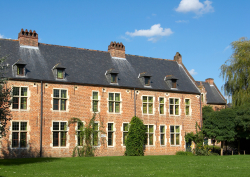New insight into natural slate solves roofing market’s problems
Since the dawn of time, slate has been the most important natural stone and virtually the only one used for roofing. However, there is a lack of knowledge about this valuable material, in contrast with the abundant scientific literature for other stones such as marble or granite. The EU-funded TOMOSLATE (New uses for X-ray tomography in natural building stones: Characterization, pathologies and restoration of historical and recent roofing slates) project aimed at ‘filling the knowledge gap, while identifying the main problems of the roofing slate industry in Europe and providing answers,’ says principal project investigator Dr Víctor Cárdenes. The characteristics of roofing slate were examined using X-ray micro-computed tomography (MCT), together with other analysis techniques. Novel methods to tackle roofing slate industry problems ‘Today, no standard classification exists for the different varieties of roofing slate,’ notes Dr Cárdenes, a researcher at Belgium’s Ghent University. The roofing slate industry uses commercial names, instead of the petrological denominations for each rock. This leads to overall confusion about the nature and characteristics of roofing slates. TOMOSLATE characterised and classified the existing roofing slate lithotypes. According to Dr Cárdenes, this is the first ever classification of roofing slates to be performed anywhere in the world. The project defined the pathologies that affect roofing slates in order to propose a methodology that mitigates the incidence of weathering on the stone. ‘This is vital to preserve Europe’s architectonic heritage,’ stresses Dr Cárdenes. The method to prevent iron sulphide oxidation – the main weathering culprit – is based on a new concept. Instead of applying a chemical product to the roofing slate during the production chain, this innovative technique is employed when the slate on the roof begins to show oxidation. A protective coating paint is applied using a spray can. The approach is easy to use and environment friendly. TOMOSLATE analysed the standardised tests applied to roofing slates. ‘These tests are mandatory for the roofing slate market,’ he adds. ‘However, they can be optimised to improve the information obtained from assessments.’ Dr Cárdenes says that the project also yielded an unexpected result. The use of MCT on slates highlighted a pyrite framboid population. Measuring and analysing these populations in a fast and reliable way has opened up new line of research which has important implications for other fields of geology, including palaeoecology and ore mining. Unlocking the mystery of what roofing slate actually is ‘TOMOSLATE will help the roofing slate industry, builders and architects to better understand their products,’ explains Dr Cárdenes. When he and others visited slate quarries and gave talks at dedicated conferences, the overall impression was that nobody really knew exactly what roofing slate was. Some producers didn’t even know what kind of stone they were quarrying. ‘We now have greater awareness of a very important natural stone that’s used abundantly in Europe and the rest of the world,’ concludes Dr Cárdenes. Ultimately, TOMOSLATE outcomes will revitalise the economy of European slate-producing areas because of the added value given to their slates.



